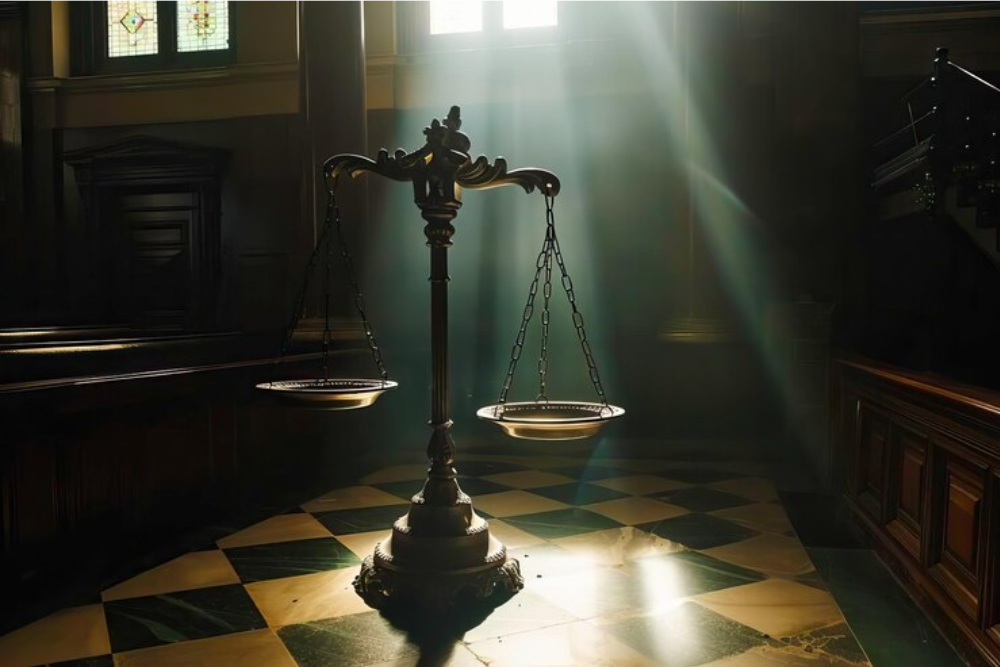THE PREAMBLE

The Constitution of India is a profound document that not only outlines the governance structure of the nation but also embodies its foundational principles and aspirations. Central to its ethos is the Preamble, which declares India to be Sovereign, Socialist, Secular, Democratic, and Republic. These principles go beyond mere labels; they serve as guiding lights that shape India's legal, social, and political landscape. Each principle, reaffirmed through landmark judicial interpretations, reflects a steadfast commitment to safeguarding individual liberties, promoting social justice, and establishing a governance framework rooted in democracy and the rule of law.
Sovereign, Socialist, Secular, Democratic, Republic (Preamble):
These terms are not mere labels but define the nation's character. The concept of "Sovereignty" was reaffirmed in Kesavananda Bharati Sarma v. State of Kerala (1973), where the Supreme Court established the "Basic Structure Doctrine," limiting Parliament's power to amend the Constitution's essential features.
• Sovereign: India enjoys independence and exercises supreme power within its territory.
• Socialist: Aims to reduce economic inequalities and promote social welfare through government policies.
• Secular: Ensures equal respect for all religions, with no State religion.
• Democratic: Government derives its legitimacy from the will of the people expressed through elections.
• Republic: Head of State is an elected representative, not a hereditary monarch.
Social, Economic, and Political Justice (Preamble) –
The Constitution seeks to dismantle entrenched social hierarchies, ensure equitable distribution of resources, and empower every citizen to participate meaningfully in the political process. The ideal of social justice was further elaborated upon in Maneka Gandhi v. Union of India (1978), where the Court held that the right to life and liberty under Article 21 encompasses the right to live with dignity, including the right to basic necessities.
Fundamental Rights (Part III): The Bedrock of Individual Liberty.
Part III grants a panoply of fundamental rights, enforceable in court, shielding citizens from arbitrary State action:
Right to Equality (Articles 14-18): Prohibits discrimination based on religion, race, caste, sex, or place of birth. This right was further strengthened in Evaru Meher Bai v. State of Maharashtra (1996), where the Court declared the practice of "triple talaq" unconstitutional.
Right to Freedom (Articles 19-22): Guarantees freedom of speech and expression, assembly, movement, etc., subject to reasonable restrictions. The Supreme Court, in Hamidiya Educational Society v. Union of India (2000), recognized the right to silence as a facet of this fundamental right.
Right against Exploitation (Articles 23-24): Prohibits human trafficking, forced labor, and child labor. The Court, in Bandhua Mukti Morcha v. Union of India (1983), played a crucial role in highlighting the plight of bonded laborers and interpreting relevant legislation.
Right to Freedom of Religion (Articles 25-28): Ensures freedom of conscience, faith, and practice. In SR Bommai v. Union of India (1994), the Court established the concept of "secularism" as a part of the basic structure of the Constitution, protecting religious minorities.
Cultural and Educational Rights (Articles 29-31): Protects cultural and educational rights of minorities. The judgment in TMA Pai Foundation v. State of Karnataka (2002), while upholding the right to establish educational institutions, emphasized the need for reasonableness and adherence to fundamental rights.
Right to Constitutional Remedies (Article 32): Guarantees the right to approach the Supreme Court for enforcement of fundamental rights. This right has been instrumental in ensuring judicial review and upholding the rule of law. In Maneka Gandhi v. Union of India (1978), This landmark case expanded the scope of Article 32, emphasizing that the right to constitutional remedies includes the right to fair procedure, natural justice, and liberty. It underscored the Supreme Court's role in ensuring that laws and executive actions comply with fundamental rights, thereby reinforcing the rule of law in India.
Directive Principles of State Policy (Part IV) -
These are non-justiciable guidelines for the State to achieve social and economic justice:
Welfare State: Aims to promote the welfare of the people by providing basic necessities like healthcare and education. The Right to Education was recognized as a fundamental right in Unni Krishnan v. State of Andhra Pradesh (1993), based on the Directive Principle to provide free and compulsory education for all children.
Equal Opportunity: Promotes equal opportunities for all citizens in education and employment. The judgment in Indira Sawhney v. Union of India (1992), upholding reservations in government jobs for socially and educationally backward classes, is a landmark example of affirmative action based on this principle.
Balancing Individual Rights and Social Welfare –
The Constitution recognizes the need for a delicate equilibrium between individual freedoms and the collective good:
Individual Rights vs. National Security: Reasonable restrictions can be imposed on certain fundamental rights during emergencies to safeguard national security. The Supreme Court, in A.K. Gopalan v. State of Madras (1950), while upholding the government's power to impose reasonable restrictions on fundamental rights, emphasized the need for procedural safeguards to protect individual liberty.
The Constitution of India, through its Preamble, Fundamental Rights, and Directive Principles of State Policy, establishes a framework that defines the nation's character and aspirations. These principles Sovereign, Socialist, Secular, Democratic, and Republic are upheld by landmark judicial decisions, ensuring individual liberties and social justice. The Constitution balances individual rights with the collective good, guiding India towards a society where dignity, equality, and opportunity prevail. It remains a living document, evolving to meet contemporary challenges while steadfastly holding onto its foundational values.
